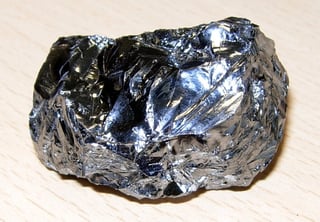I am unable to find images of pure crystalline graphite with high confidence, but based on various sources I believe that it should actually be both black and shiny, in the sense that it reflects much less visible light than a white piece of paper, and yet has a much more metallic sheen than paper. For example, this webpage has this image, which I guess is of pure crystalline graphite:

From my understanding, the absorption/emission spectrum of a material in the visible range is determined mostly by the permissible energy levels of the 'valence' electrons within the material. In a metal crystal, the atoms belong to a single macromolecule with macromolecular orbitals holding valence electrons, and so the electrons can easily absorb/emit photons across a wide continuous spectrum, hence contributing to the shiny lustre of metals. But this explanation also applies to crystalline graphite, where in each sheet we have macromolecular orbitals spanning the entire sheet (which also explains its conductivity along sheets). However, crystalline graphite seems to be significantly 'blacker' than crystalline silicon as shown in the below image from wikimedia:

Why is it so? What is the most significant reason contributing to the 'dark' colour of graphite? I also noticed that if you take a graphite pencil and shade an oval completely (yes MCQ), it looks black under usual lighting unless it is at an angle to catch the light from an overhead lamp at which point it appears to be very shiny.
I guess that crystalline graphic is in fact metallic just like silicon, and that its apparent black colour is merely an illusion in the sense that it is just a matter of having a higher ratio of absorption to emission of visible photons, meaning that we simply need a brighter light to observe its metallic lustre. Based on this, I believe that a polished crystal of graphite will have less reflectance than a polished crystal of silicon, which in turn will have less reflectance than a polished crystal of silver, but that if we ignore reflectance then they should all have qualitatively the same sheen.
If my guess is right, what I am missing are the key factors that determine reflectance at visible wavelengths that correspond to energy levels in the valence band. Is it that in some crystals the valence electrons that absorb incident photons lose a significant fraction of the gained energy via phonons, whereas in other crystals they cannot easily lose that energy via phonons? Can anyone give specific details of how graphite, silicon and silver differ in this regard?
